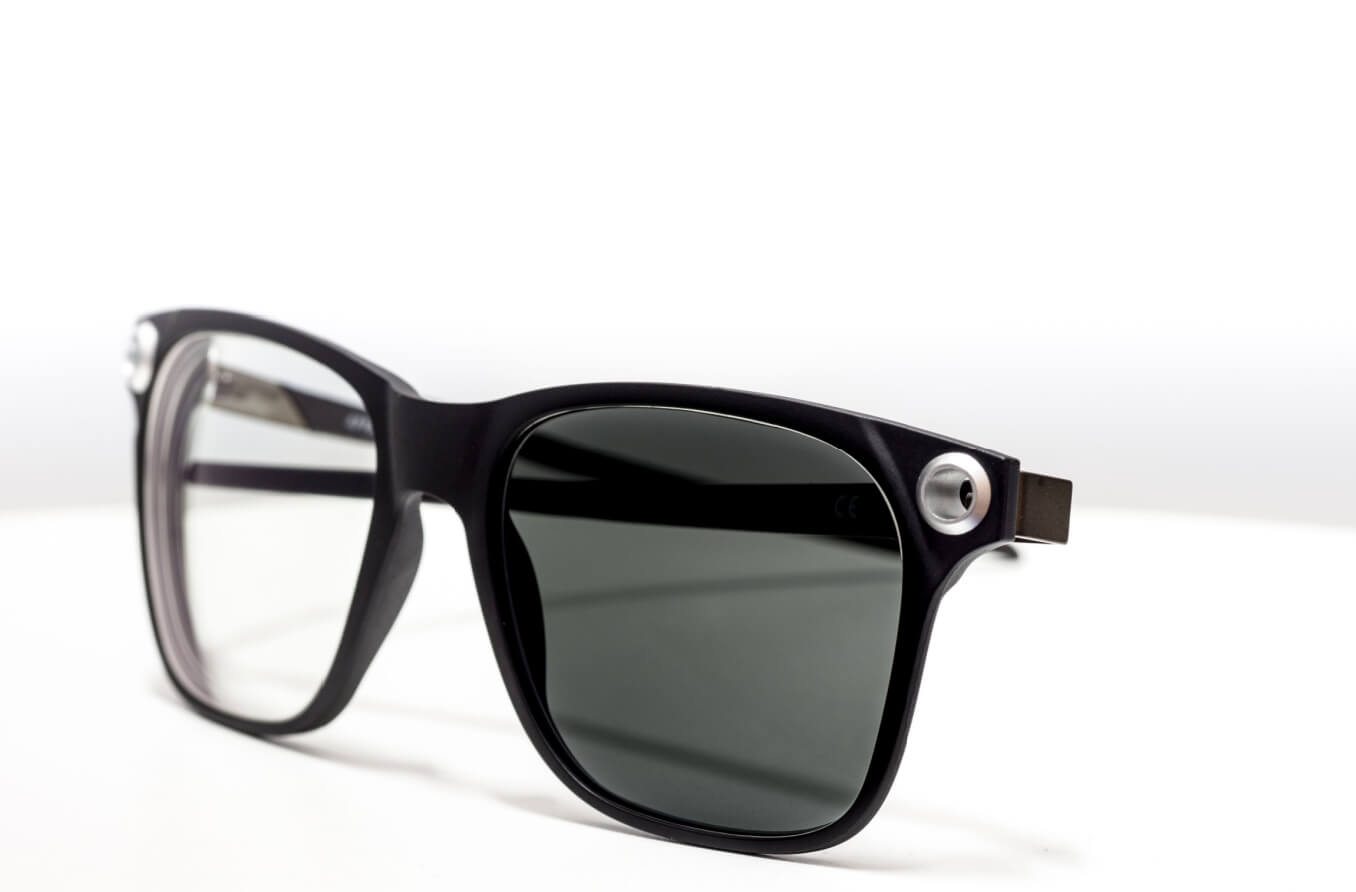Photochromic light-adaptive lenses for glasses and sunglasses

Photochromic lenses are spectacle lenses that are clear (or nearly clear) indoors and darken automatically when exposed to sunlight. Other terms sometimes used for photochromic lenses include "light-adaptive lenses" and "variable tint lenses."
The most popular brand of photochromic lenses sold in the UK are Transitions lenses. Because of this, some people — including some eye care practitioners — refer to photochromic lenses as "transitions lenses" or "transition lenses." But there are other brands of photochromic lenses available as well.
The molecules responsible for causing photochromic lenses to darken are activated by the sun's ultraviolet radiation. Because UV rays penetrate clouds, photochromic lenses will darken on overcast days as well as sunny days.
Photochromic lenses typically will not darken inside a vehicle because the windscreen glass blocks most UV rays. Recent advancements in technology allow some photochromic lenses to activate with both UV and visible light, providing some darkening behind the windscreen. Ask your optician for details.
Photochromic lenses are available in nearly all lens materials and designs, including high-index lenses, bifocals and progressive lenses. An added benefit of photochromic lenses is that they shield your eyes from 100 percent of the sun's harmful UVA and UVB rays.
Because a person's lifetime exposure to sunlight and UV radiation has been associated with cataracts later in life, it's a good idea to consider photochromic lenses for children's eyewear as well as for spectacles for adults. Polycarbonate is the safest lens material for kids, providing up to 10 times the impact resistance of other lens materials.
NEED AN EYE EXAM OR NEW GLASSES? Find an optician or optical shop near you.
Adding anti-reflective coating to photochromic lenses enhances their performance even further. AR coatings allow more light to pass through photochromic lenses for sharper vision in low-light conditions (such as driving at night), and eliminates bothersome reflections of sunlight and other light from the backside of the lenses in bright conditions.
Though photochromic lenses cost more than clear spectacle lenses, they offer the convenience of reducing the need to carry a pair of prescription sunglasses with you everywhere you go.
Photochromic lens brands
Popular brands of photochromic lenses sold in the UK include:
Transitions Signature — Transitions Signature lenses with Chromea7 technology represent the latest advancement in Transitions adaptive lenses. They are available in grey, brown and graphite green. The lenses are almost fully clear indoors and are more responsive to sunlight, so they are darker when you need them to be, according to the company. Transitions Signature lenses are the fastest to fade back to clear indoors of all the Transitions products.
Transitions XTRActive — These lenses were developed for wearers who are light-sensitive indoors and desire a darker lens when driving and outdoors. Transitions XTRActive lenses have slight tint indoors to keep your eyes comfortable when exposed to harsh lighting (fluorescents lights, digital devices). They also activate behind the windscreen of a car and are available in grey, brown and graphite green tints. [See Related: Blue light spectacles]
Transitions Style Colours — Transitions Style Colours lenses feature four new vibrant fashion colours allowing you to create the perfect combination of frame and lenses. They are available in vintage amber, striking amethyst, cool sapphire and versatile emerald.
Sensity (Hoya Vision Care) — Introduced in 2014, Hoya's Sensity photochromic lenses feature trademarked technology that insures the lenses perform consistently in varying climates and temperatures, according to the company. Sensity lenses are available in grey, emerald green, and contrast-enhancing brown colours and are offered in a variety of lens designs, lens materials and anti-reflective coatings.
PhotoFusion (Carl Zeiss Vision) — Made in Germany, PhotoFusion lenses are available in 5 colours for accurate colour vision in all lighting conditions, according to the company. The lenses darken up to 20 percent faster and lighten indoors up to twice as fast as previous Zeiss photochromic lenses.
ColorMatic (Rodenstock) — Also made in Germany, Rodenstock's ColorMatic lenses are available in grey, brown and green photochromic tints. The company also offers ColorMatic IQ Contrast photochromic lenses in contrast-enhancing shades of orange and green.
PhotoView (Signet Armorlite) — PhotoView lenses are made of lightweight plastic and polycarbonate and are available in grey and brown photochromic tints in a variety of lens designs, including Kodak progressive lenses.
Photochromic lenses and blue light
Besides protecting your eyes from glare outdoors, photochromic lenses offer an additional important benefit — they help protect your eyes from harmful blue light.
Blue light contributes to digital eye strain and causes oxidative stress in the retina. It's even possible that long-term exposure to harmful blue light from sunlight and the display screens of computers, smartphones and other digital devices may increase a person's risk of macular degeneration and other eye problems later in life.
Photochromic lenses can help. For example:
Transitions Signature and Style photochromic lenses block 1.4 times more harmful blue light indoors than basic clear lenses, and they filter over 8 times more harmful blue light outdoors than clear lenses.
Transitions XTRActive photochromic lenses block at least 2 times more harmful blue light indoors than clear lenses, and 8 times more harmful blue light outdoors.
See your optician to discuss your blue light exposure risks and which type and brand of photochromic lenses is best for your specific needs.
Page published on Tuesday, 25 June 2019






